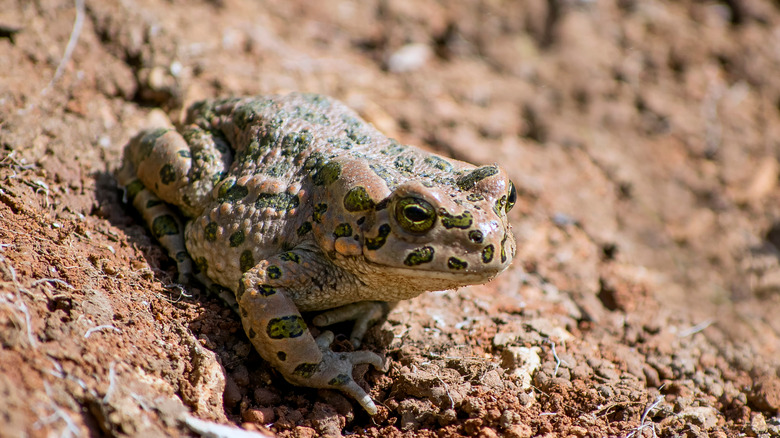Why You Might Want To Stop Eating Frog Legs
In medieval times, denizens of European monasteries turned to the "Rule of Saint Benedict" for the Catholic Church's guidelines on just about every realm of life — including how to eat. Despite the inherent self-discipline that's presumably required to dedicate one's life to religious service, some monks thought the dietary restrictions outlined in the rulebook were a bit too strict. One unpopular directive stated that "only the sick and infirm are allowed to consume the meat of four-legged animals," writes Viktor Athelstan of The Medieval Monk. "Over time, people started tweaking the rules," he adds. "Or if they weren't outright changing them, then they were finding loopholes."
Fast forward to the 12th century in France, when the Catholic Church was reigning supreme. According to The Guardian, monks started eating frog legs (also known as the most surprising food sold at Nathan's Famous) to sidestep the rule that prohibited them from eating meat "on a certain number of days a year." The monks argued that frogs were more fish-like than anything, which gave them a pass. Meanwhile, French peasants looking to emulate their devout neighbors (and get their fix of vitamins and protein) started eating frog legs, too. Et voilà: "A national delicacy was born," and it has persisted today.
Unfortunately, an insatiable demand for frog legs in France and Belgium is contributing to the demise of these tender-limbed amphibians.
The Anatolian water frog is one of the species facing extinction
According to a report from the German conservation NGO Pro Wildlife (cited by The Guardian), frogs in Indonesia, Turkey, and Albania are on "the brink of extinction" due to high demand for their legs in France and Belgium. Collectively, European countries import roughly 200 million "mostly wild" frogs each year.
It's not just one kind of frog that's endangered, either; a report in Cambridge University Press shows that the Turkish-native Anatolian water frog could be wiped out by 2032, while The Guardian notes that the giant African bullfrog of Swaziland may have already met this fate. "If the plundering for the European market continues, it's highly likely that we will see more serious declines of wild frog populations and, potentially, extinctions in the next decade," said Pro Wildlife's Dr. Sandra Altherr.
In addition being over-harvested for their culinary value, the report adds, amphibians on the whole are threatened by a host of additional factors, including pollution, habitat loss, global climate change, and diseases. According to the International Union for the Conservation of Nature, amphibians are "the most threatened group of vertebrates." The next time you see frog legs on a menu, you might consider ordering a more sustainable seafood option.

